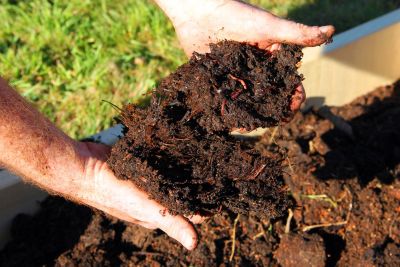Why Use Compost as Soil Amendment?
Mixing compost with soil is a win-win for the garden. Amending soil with compost provides numerous benefits and is a natural way to enhance soil health. However, using too much compost as soil amendment can cause certain problems, especially with specific plants. Learn how to add compost to soil at the correct ratio to optimize the advantages of this common soil amendment. Mixing compost with soil provides nutrients for plants today but also enhances soil for future years. The amendment naturally breaks down, releasing important macro- and micronutrients while feeding the beneficial biological organisms in the soil. It also increases the porosity of the soil and helps conserve moisture. There are many other soil amendments, but most only provide one or two advantages, while compost is responsible for many benefits. Compost will naturally enhance the health of soil and will even increase good organisms, such as earthworms.
How to Add Compost to Soil
First, make sure your compost is well rotted and not contaminated with weed seeds. Some experts recommend that compost be spread over the soil and not mixed in. This is because digging will disturb the delicate mycorrhizal fungi, which help plants access nutrients from deep in the earth. However, in clay or sandy soils, amending soil with compost will enhance the soil enough to warrant such disruption. If your soil has a good texture, you can simply spread the compost on the surface. Over time, rain, worms and other natural actions will wash the compost into the plant’s roots. If you are making your own potting soil, mix 1 part compost with 1 part each peat, perlite, and top soil. A good rule of thumb on using soil and compost to perk up the garden is not to use more than 3 inches (7.6 cm.). Vegetable gardens benefit from this higher range unless you had already worked in the previous season’s yard waste. Ornamental beds generally need less, while a fall cover crop of 1-3 inches (2.5 to 7.6 cm.) provides some protection for plant roots and keeps moisture in the soil. A spring application of just ½ inch (1.3 cm.) will gently begin to feed plants and help prevent those early annual weeds.
